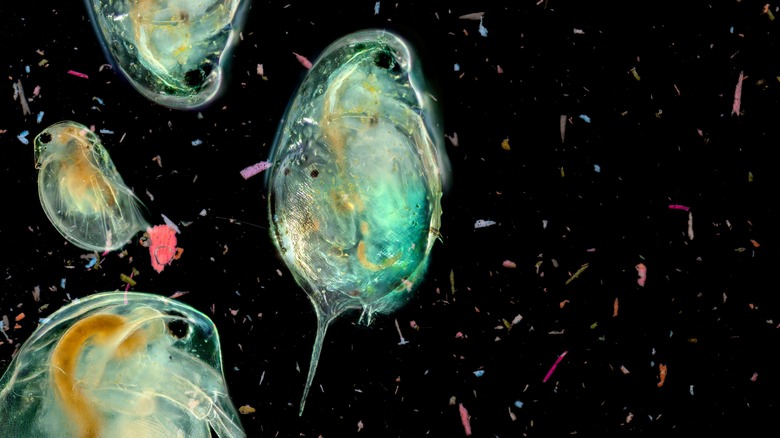The Stunning Beach In The Maldives That Actually Glows In The Dark
Say the word "Maldives," and it immediately conjures images of a dreamy vacation unlike any other. There's no doubt you've seen those mesmerizing snapshots on your Instagram feed of infinity pools, floating breakfasts, and crystal-clear water with manta rays gliding just beneath the surface — and that's just during the day. At night, there's another treasure to behold in these turquoise waters. It's called the Sea of Stars on Vaadhoo Island in the Raa Atoll.
Sitting 121 miles from the capital Malé, Vaadhoo Island's shores are home to millions of phytoplankton that light up the ocean waves, making it look as though the stars themselves have decided to take a dip in the sea (hence the name, Sea of Stars). While this natural phenomenon is visible during the day, it's nothing short of spectacular at night. Whether walking along the shore or snorkeling to get a glimpse beneath the surface, one thing is for certain: you have to see it to believe it.
What causes the waves to glow
The light show in the Maldives is known as bioluminescence, created when sea organisms like fish, squid, jellyfish, and plankton produce a chemical reaction to ward off predators. It's relatively rare on land, but this marvel can be spotted in a few gems around the globe, like Mosquito Bay in Puerto Rico, Laguna Beach in California, and Halong Bay in Vietnam. The neon hue can range from violet to red or blue to green, says the National Oceanic and Atmospheric Administration (NOAA).
Here in the Maldives, visitors will find an otherworldly shade of electric blue. The microscopic plankton in these warm waters, known as dinoflagellates, use a compound called luciferin to create that beautiful glow en masse. It's meant to scare off local copepods, small crustaceans that are barely visible to the human eye, which love to graze on plankton. But that's not the only trigger. Each time the movement of the waves agitates the dinoflagellates, they light up in response, creating a dazzling display of light for visitors to enjoy over and over again.
Tips for seeing the bioluminescence
The bioluminescence in the Maldives is similar to the Northern Lights in that you can show up at just the right time of year but see only a trace of light or the show to end all shows. It depends on many factors, says the country's national tourism office, including the water level, nutrients, how much salt is in the water (salinity), and the tide. While Mother Nature can be unpredictable, and there's no guarantee of exactly what you'll find, your best bet is to visit sometime between June and October. Try to line up with your vacation with a new moon when the sky is the darkest.
To get to Vaadhoo Island, fly into Malé International Airport and take a ferry to the island. The beach is open to visitors 24 hours a day, 7 days a week, with no fee. Be sure to bring a flashlight or headlamp so you can explore safely. You may want to pack some conservative attire, as the Republic of Maldives is a Muslim country. For the best photos, use a tripod to steady your camera and play with your settings (hint: higher ISO and longer exposure), as the light can be tricky to photograph. If the plankton aren't around when you visit, try Mudhdhoo Island Beach, Rangali Island Beach, and Baa Atoll Beach. No matter which shore you choose in the Maldives, the glowing waves will add an extra air of magic to your beach getaway.


